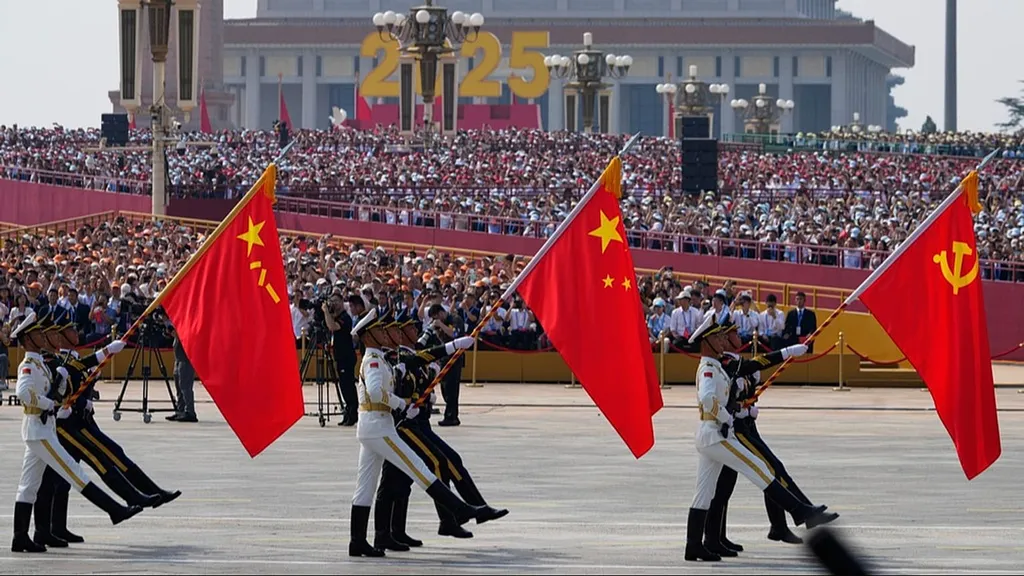China’s first major military parade in six years has underscored the rapid advancements in its military modernisation, showcasing a diverse array of cutting-edge weaponry that signals a significant evolution in its strategic capabilities. The event, marking the 80th anniversary of the end of World War II, provided a platform for the People’s Liberation Army (PLA) to demonstrate its progress in integrating technological innovations into its defence infrastructure.
At the forefront of the display was China’s expanded nuclear arsenal, featuring a full array of weapons deployable from air, land, and sea. Among the highlights was the DF-5C intercontinental ballistic missile (ICBM), an upgraded version capable of striking global targets, alongside the JL-3, the PLA’s most advanced submarine-launched ballistic missile. The parade also marked the debut of the DF-61, a road-mobile ICBM designed to enhance survivability by reducing vulnerability to pre-emptive strikes. The H-6N strategic bomber, a modernised version of a Cold War-era aircraft, also made an appearance, reflecting China’s ongoing efforts to extend its strike range and nuclear delivery capabilities.
The parade also revealed advancements in unmanned systems, including undersea drones shaped like torpedoes. These systems, if produced at scale and proven operationally effective, could pose new challenges for China’s naval adversaries. Additionally, the PLA showcased its anti-drone systems, including high-energy laser weapons, high-power microwave systems, and missile guns, highlighting its efforts to counter emerging threats in the drone warfare domain.
Hypersonic anti-ship missiles, such as the YJ-15, YJ-17, YJ-19, and YJ-20, were also prominently featured. These weapons, capable of being deployed from land, ships, and aircraft, raise concerns for U.S. and allied naval forces in potential conflict scenarios in East Asia. The parade underscored China’s growing ability to project power across multiple domains, from underwater to air and space.
Foreign analysts are closely monitoring these developments, assessing how effectively China can deter and intimidate not just the United States but also other regional rivals. The parade serves as a clear indication of China’s strategic ambitions and its determination to modernise its military to meet future security challenges.
This display of military might is likely to accelerate the arms race in the Asia-Pacific region, prompting neighbouring countries and the U.S. to reassess their defence strategies. The parade also highlights the growing importance of technological innovation in modern warfare, with China positioning itself as a leader in defence advancements. As the PLA continues to integrate these new systems into its operational capabilities, the geopolitical landscape in the region is set to become increasingly complex and competitive.

